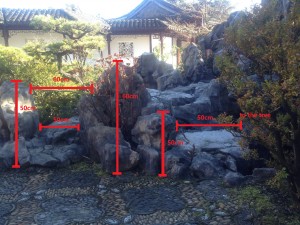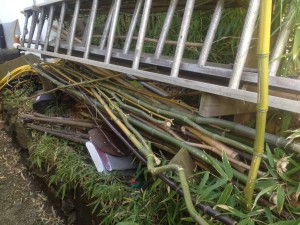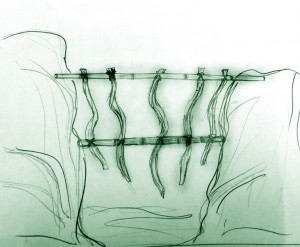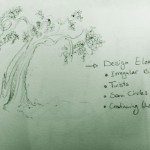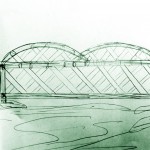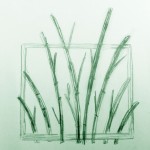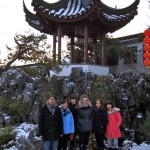WE HAVE GREAT NEWS!
Mar 9th, 2012 by jchow16
We have made great progress this week!
This Tuesday, our group went to the garden and met with our client Claudette again with our preferred design. She said that she would take it to the architect to get it approved, so that we can use our design for calculations and documentation. This is a huge step for our project; our group has not met Claudette for a long time, and after this meeting, our design is nearly finalized, allowing us to complete project deliverables and move on to the next step. At this point, we still have several things to do. Choosing the materials is the most important issue for us, as this includes the amount of materials that we need, the budget, where we can buy them, and what skills we can use to cut them safely and efficiently. Mainly, the core material of our design is bamboo, and we will look into exactly where we can buy them. During the meeting, Claudette also said that we cannot use objects and materials in the garden. It seems that our project has become more difficult and the estimated completion date has been delayed even further.
However, the situation mentioned in the previous paragraph has changed after our group left the garden. Andy was taking photos in the garden in order to make measurements to scale. Claudette approached him and had a short conversation with him, saying that because our group is short of time, she has decided to modify our design to a much simpler one. The modified design is made of only bamboo sticks tied together by oiled twine, and the main shape of the barrier consists of a triangle. Later on, she guided Andy to a place in the garden where there was a lot of bamboos. She said that our group could use as many bamboo sticks in the pile as we want. Andy was very happy to hear about this good news because our main problem has been solved, and now we only need to find a place to buy oiled twine. Before Andy was dismissed from the garden, she picked up a sample barrier which was made by another group a long time ago, and told Andy to bring it to our group meeting, so that we can make the best out of it.
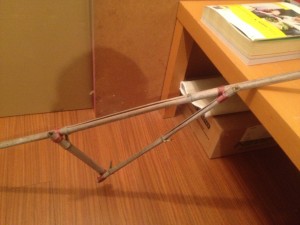
Our client showed us this sample barrier that was left behind by a previous group; the design consists of a triangle
It seems that at this point, if our project goes well and we stick to our new schedule, we should be able to finish the project by the end of March.
After today’s group meeting at school, we have decided that we will pick up the bamboo sticks from the garden this Sunday, as well as purchase oiled twine and glue from a hardware store. With these tasks completed by the end of the week, we will be set to construct the barriers next week. We aim to finish the documentation portfolio by the coming Monday, which will be our first deliverable for the project. Everything will go up from here, never down again! Stay tuned for our blog post next week!
